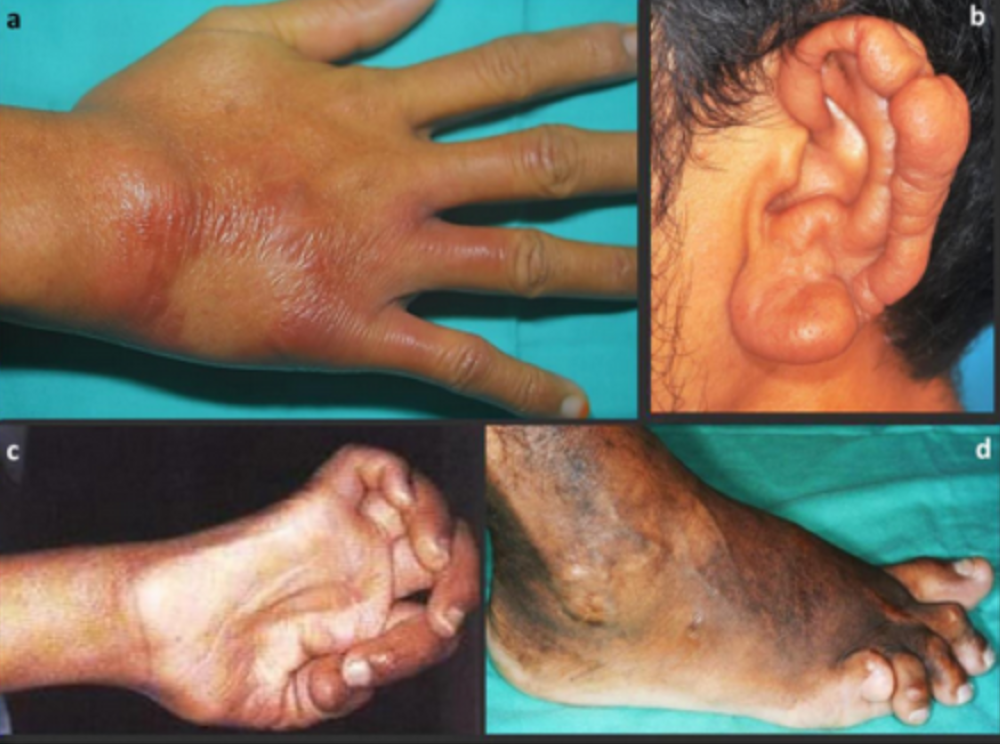
Leprosy outbreak in Negeri Sembilan: Here’s everything you need to know about the disease

Patients who suspect they might have leprosy come to this clinic in Sungai Buloh, Selangor for an initial examination before being referred to a hospital. — File picture by Hari Anggara
Thursday, 20 Feb 2025 10:43 AM MYT
- Leprosy has caused one death in Kuala Pilah, Negeri Sembilan as of February 2025.
- Leprosy is not highly contagious and requires prolonged, close contact with an infected person to spread.
- It doesn’t spread through casual contact like shaking hands or hugging, sharing meals or sitting within proximity.
- Prevention currently is only the BCG (Bacillus Calmette-Guerin) vaccine in the market.
KUALA LUMPUR, Feb 20 — Negeri Sembilan is currently experiencing an outbreak of leprosy with nine reported cases so far and one death of an 18-year-old girl three days ago, after a week-long fever.
The reported cases were in the villages of Kampung Orang Asli Chergun and Guntur in Kuala Pilah and those infected are currently receiving treatment.
As of now, the state authorities have quarantined these two villages as a precaution to contain the spread of the disease, although Health Minister Datuk Seri Dzulkefly Ahmad has said the cases are isolated and not widespread.
Malaysia was one of the pioneers in the global fight against the disease in the 1980s and even achieved the World Health Organisation’s (WHO) elimination target to less than 1 case per 10,000 people in 1991.
But any disease outbreak is worrisome, so here’s what you need to know.
What is leprosy?
Leprosy, also known as Hansen’s disease or kusta in Malay, is a chronic infectious disease caused by the bacterium Mycobacterium leprae.
The disease is one of the oldest infectious diseases known to mankind with earliest evidence dating back to 4,000 years ago in India.
It primarily affects the skin, peripheral nerves, mucosal surfaces, and eyes, and if left untreated, it can lead to severe long-term complications.
Despite the historical stigma surrounding the disease, leprosy is now understood to be a disease that is both treatable and preventable, with early diagnosis being key to preventing disability.
How prevalent is it in Malaysia?
The disease is considerably contained and is not prevalent in Malaysia, but cases have surfaced across the country in recent years.
In 2023, Malaysia reported 256 cases of leprosy, a 40 per cent increase from 2022.
Last year, available data showed 66 confirmed cases in Malaysia as of May 2024.
What are the signs?
The signs and symptoms of leprosy can vary, but they often include skin lesions that are lighter than normal skin colour, with only partial feeling or numbness.
Common symptoms include:
- Discoloured skin patches
- Thick or dry skin
- Painless swelling or lumps on the face
- Muscle weakness or paralysis
- Vision problems that may lead to blindness

Some of the symptoms of leprosy. — Picture from UPM website
Leprosy can often go unnoticed in its early stages because its signs can be slow to develop.
How is leprosy transmitted?
Leprosy is transmitted mainly through droplets from the nose and mouth of untreated, infectious individuals.
It is important to note that leprosy is not highly contagious and requires prolonged, close contact with an infected person to spread.
The disease doesn’t spread through casual contact like shaking hands or hugging, sharing meals or sitting within proximity.
Leprosy, however, has a long incubation period ranging from five to 20 years — making it difficult to detect and isolate newly infected cases immediately.
What are the treatment options?
Leprosy is treatable through a combination of antibiotics known as multi-drug therapy, which the World Health Organisation provides for free globally.
The treatment often lasts from six months to a year, depending on the form and severity of the disease.
Thanks to available treatment options, interventions not only stop the spread of the disease but also prevent further nerve damage.
Does it result in death?
Leprosy itself is not directly fatal, but complications arising from untreated cases such as significant nerve damage, secondary infections, or disability can severely diminish the quality of life and in some cases be fatal.
Deaths associated with leprosy are often due to these secondary consequences rather than the infection itself.
How can leprosy be prevented?
Early detection and treatment of the infection is effective in stopping the disease from progressing and spreading.
So far there is only the BCG (Bacillus Calmette-Guerin) vaccine in the market used for leprosy, although its effectiveness in preventing the disease is variable and subject to ongoing research.
No comments:
Post a Comment